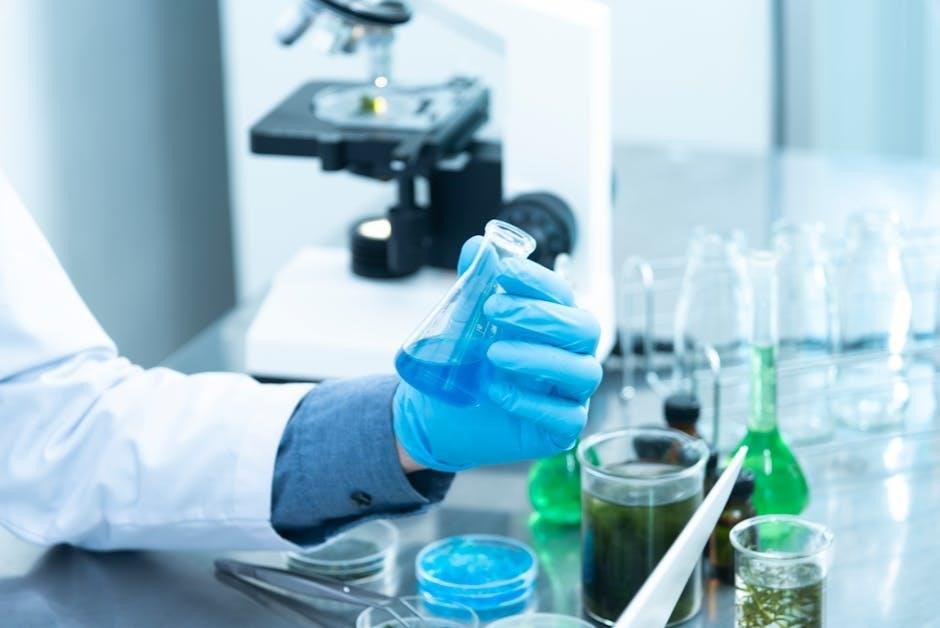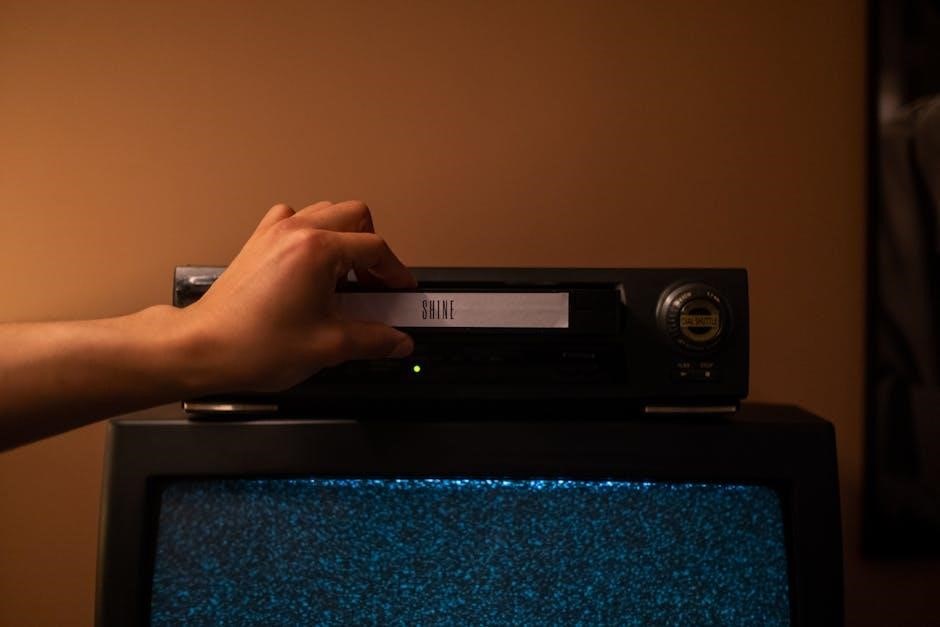Chemistry 1050 Lab Manual Answers: A Comprehensive Guide
This guide offers comprehensive assistance for Chemistry 1050 lab manual answers. It provides valuable insights into experiments, problem-solving approaches, and theoretical concepts covered. Access solutions, study tools, and expert assistance to excel in Chemistry 1050 labs and understand key concepts.
Chemistry 1050 is an introductory course designed to provide students with a foundational understanding of general chemistry principles. This course typically covers a wide array of topics, including stoichiometry, chemical reactions, thermodynamics, and basic quantum mechanics. A crucial component of Chemistry 1050 is the laboratory section, where students gain hands-on experience that reinforces theoretical knowledge.
The lab manual plays a vital role in this process. It serves as a comprehensive guide, detailing experimental procedures, safety protocols, and expected outcomes. The lab manual isn’t just a set of instructions; it’s a tool designed to enhance learning and critical thinking. It contains pre-lab questions that prepare students for the experiment, step-by-step procedures to ensure accurate execution, and post-lab questions to encourage analysis and interpretation of results.
Understanding the answers within the lab manual is essential for success in Chemistry 1050. It provides a framework for understanding chemical concepts, developing practical laboratory skills, and improving problem-solving abilities. Accessing and utilizing the lab manual effectively can significantly improve a student’s overall performance and comprehension of chemistry.
Availability of Chemistry 1050 Lab Manuals
Securing a Chemistry 1050 lab manual is a crucial step for students enrolled in the course. These manuals are typically available through multiple channels, ensuring students have convenient access. The most common source is the university’s bookstore, where new and sometimes used copies can be purchased. It is advisable to check the bookstore’s website or visit in person to confirm availability and pricing.
Another avenue for obtaining lab manuals is directly through the chemistry department. Some departments offer lab manuals for sale during specific periods, often at the beginning of each semester. This can sometimes be a more cost-effective option, so checking with the department’s administrative office is a good idea.
Additionally, students can explore online marketplaces and forums. Websites like Amazon, eBay, and student-specific platforms often have listings for used lab manuals from previous students. However, ensure that the edition matches the one required for the current semester. Digital versions might also be available through the university’s online resources or third-party educational platforms. Always verify the legitimacy and completeness of digital copies before purchasing.
Where to Purchase the Lab Manual
Acquiring the Chemistry 1050 lab manual usually involves several reliable options. Begin by checking your university’s official bookstore. They generally stock the required edition, ensuring you get the correct materials. Often, the bookstore also provides online purchasing options, allowing for convenient pickup or delivery.

Next, consider the chemistry department itself. They sometimes offer lab manuals directly, potentially at a lower cost. Contact the department’s administrative staff to inquire about availability and purchasing procedures. This can be a particularly useful option if you are looking for clarity on the specific edition required.
Online retailers like Amazon and eBay are also viable alternatives. You can often find both new and used copies, providing opportunities to save money. However, exercise caution to ensure the edition matches your course requirements. Check ISBNs and compare details carefully before making a purchase. Additionally, explore online forums or social media groups for students, where you might find classmates selling their used manuals. Always prioritize reputable sellers and confirm the manual’s condition before committing to a purchase.
Key Topics Covered in Chemistry 1050 Labs
Chemistry 1050 labs encompass foundational topics essential for understanding chemical principles. Students delve into stoichiometry, mastering mole calculations and balancing chemical equations. Experimentation with solutions, including molarity and dilutions, builds practical skills. Acid-base chemistry introduces titrations and pH measurements, vital for quantitative analysis.
Thermochemistry explores heat transfer and enthalpy changes in chemical reactions. Gas laws are investigated through experiments involving pressure, volume, and temperature relationships. Chemical kinetics examines reaction rates and factors influencing them. Equilibrium principles are demonstrated in experiments exploring Le Chatelier’s principle.
Redox reactions and electrochemistry introduce electron transfer processes and electrochemical cells. Qualitative analysis involves identifying unknown substances through chemical reactions and observations. Spectrophotometry may be used to quantify substances based on light absorption. Throughout these labs, safety protocols and proper laboratory techniques are emphasized, providing students with a hands-on understanding of fundamental chemistry concepts and fostering critical thinking and problem-solving skills necessary for further scientific endeavors.
Solutions and Answers in Chemistry 1050 Lab Manuals
Chemistry 1050 lab manuals contain solutions and answers to guide students through experiments and calculations. These resources often include step-by-step solutions for pre-lab questions, in-lab calculations, and post-lab assignments. Solutions demonstrate the correct application of chemical principles and mathematical techniques.
Detailed explanations accompany the answers, enhancing understanding and problem-solving abilities. Solutions may also provide insight into potential sources of error and data analysis techniques. However, students are encouraged to use solutions as learning tools rather than simply copying answers. Actively working through problems and comparing their approach with the provided solutions fosters critical thinking and reinforces concepts.
Effective use of lab manual solutions promotes a deeper understanding of chemistry principles and improves experimental skills. Students can identify areas of weakness and seek further clarification from instructors or online resources. Ultimately, solutions and answers in lab manuals serve as valuable aids for mastering the material and succeeding in Chemistry 1050 labs. They are a crucial component of a student’s learning journey.
Accessing Solutions Manuals
Accessing solutions manuals for Chemistry 1050 lab manuals typically involves several options. Students can often find physical copies of solutions manuals in the library, sometimes placed on course reserve for easy access. Another avenue is purchasing the solutions manual directly from the chemistry department or bookstore. These manuals often complement the lab manual and textbook used in the course.
Online resources may also offer solutions, although their reliability can vary. Official course websites or learning management systems might provide access to solutions for specific assignments. Students should exercise caution when using unofficial online sources, ensuring the accuracy and relevance of the information.
Collaborating with classmates and forming study groups can also provide access to solutions and different perspectives on problem-solving. Discussing challenging problems and comparing approaches can enhance understanding and lead to correct solutions. However, it is essential to maintain academic integrity and avoid plagiarism. Always attempt problems independently before consulting solutions, and use them as learning tools rather than shortcuts.
Online Resources for Chemistry 1050 Lab Help
Numerous online resources cater to students seeking assistance with Chemistry 1050 lab work. Platforms like Course Hero and Studocu offer study materials, including practice problems, lecture notes, and lab reports, often shared by students who have previously taken the course. These platforms can provide valuable insights and different perspectives on challenging concepts.
Educational websites and forums dedicated to chemistry often feature discussions and explanations related to common lab experiments and problem-solving techniques. These communities can be helpful for clarifying doubts and seeking guidance from peers or experts.
YouTube channels and online tutoring services provide video tutorials and personalized assistance for Chemistry 1050 topics. These resources can be particularly helpful for visualizing complex concepts and receiving step-by-step guidance on lab procedures.
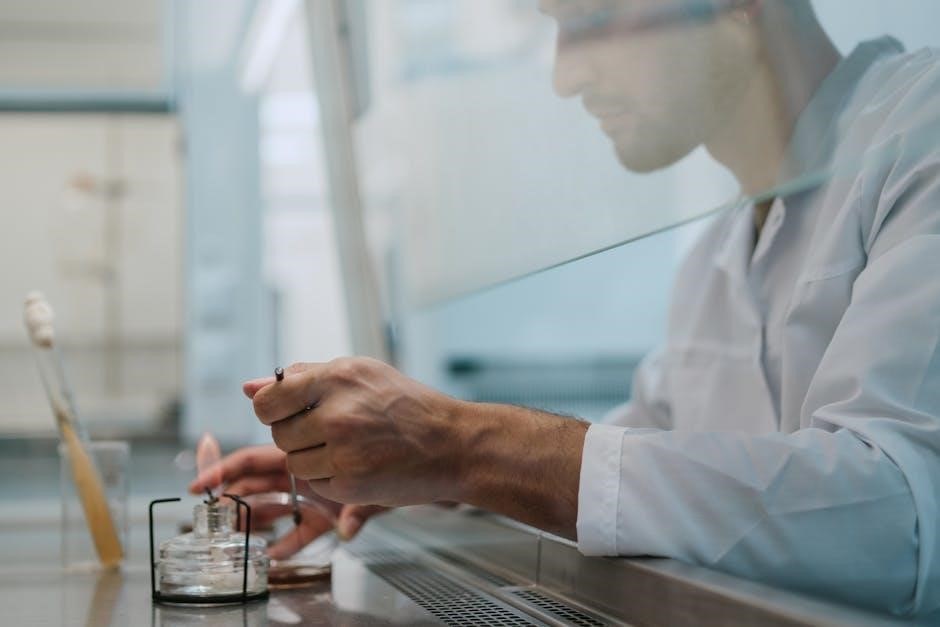
Students should critically evaluate the credibility and accuracy of online resources. Cross-referencing information with textbooks and official course materials is essential. Additionally, engaging with instructors and teaching assistants during office hours is a valuable way to clarify doubts and receive personalized support.
Flashcards and Study Tools for Chemistry 1050
Flashcards and other study tools can greatly enhance understanding and retention in Chemistry 1050. Platforms like Quizlet offer pre-made flashcard sets covering key concepts, vocabulary, and chemical reactions relevant to the course. These resources can be a convenient way to review material and test knowledge.
Creating personalized flashcards is also a highly effective study strategy. By summarizing key information from lectures, textbooks, and lab manuals onto flashcards, students can actively engage with the material and reinforce their understanding. This process also allows for customization, focusing on areas where individual students need the most practice.
Beyond flashcards, other study tools like mind maps and concept diagrams can help visualize relationships between different concepts in Chemistry 1050. Practice quizzes and problem sets, available through textbooks or online resources, provide opportunities to apply knowledge and identify areas for improvement.
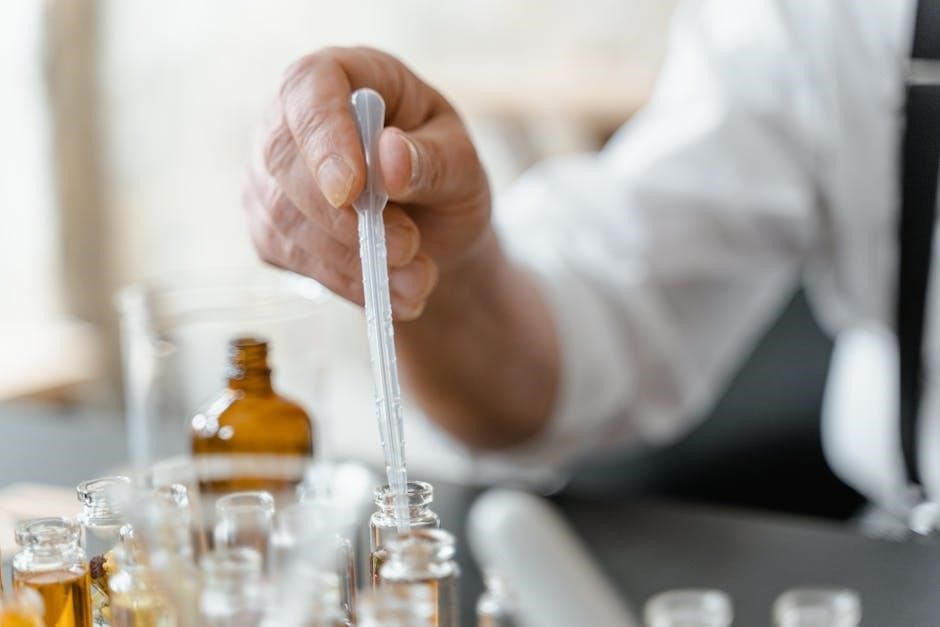
Effective use of study tools involves regular review and self-testing. Spaced repetition, a technique that involves reviewing material at increasing intervals, can significantly improve long-term retention. Consistent effort and active engagement with study tools are key to success in Chemistry 1050.
Lab Report Writing Assistance for Chemistry 1050
Crafting well-structured lab reports is crucial for success in Chemistry 1050. Lab reports communicate experimental findings, analysis, and understanding of chemical principles. Assistance in writing these reports is essential for students aiming to present their work effectively and accurately.
Resources for lab report writing assistance include university writing centers, online guides, and peer review sessions. Writing centers offer personalized feedback on structure, clarity, and grammar. Online guides provide templates, examples, and tips for each section of a lab report.
Seeking feedback from peers or instructors can greatly improve lab reports. Constructive criticism helps identify areas for improvement in clarity, accuracy, and completeness. Effective lab report writing demonstrates understanding of experimental principles and scientific communication skills.
Specific Experiments and Their Solutions
Chemistry 1050 labs often involve specific experiments with unique procedures and expected outcomes. Understanding these experiments and having access to their solutions is crucial for students. Common experiments include titrations, calorimetry, and gas law investigations.
Titration experiments determine the concentration of a substance by reacting it with a solution of known concentration. Solutions for titration experiments typically involve calculating molar masses, determining equivalence points, and applying stoichiometry to find unknown concentrations. Careful technique and accurate measurements are essential for successful titrations.
Calorimetry experiments measure the heat absorbed or released during chemical reactions. Solutions for calorimetry experiments involve using specific heat capacities, enthalpy changes, and Hess’s Law to calculate heat transfers. Understanding the principles of thermochemistry is critical for analyzing calorimetry data.
Gas law experiments explore the relationships between pressure, volume, temperature, and the amount of gas. Solutions for gas law experiments involve applying Boyle’s Law, Charles’s Law, and the Ideal Gas Law. Careful attention to units and conversions is necessary for accurate calculations.
Accessing solutions and explanations for these specific experiments helps students grasp the underlying concepts and improve their problem-solving skills in chemistry.
Gas Constant Experiment
The gas constant experiment, a common feature in Chemistry 1050 labs, focuses on experimentally determining the value of the ideal gas constant, denoted as ‘R’. This experiment typically involves reacting a known amount of a substance, often magnesium, with an acid to produce hydrogen gas.
The volume of the hydrogen gas collected is carefully measured, along with the temperature and pressure. Using the ideal gas law equation (PV = nRT), students can then calculate the value of R. Accurate measurements of volume, pressure, and temperature are crucial for obtaining a reliable value for R.
Sources of error in this experiment can include incomplete reactions, gas leaks, and inaccuracies in measuring the volume or pressure. Accounting for water vapor pressure is also essential for accurate results. Students must understand the underlying principles of gas laws and stoichiometry to perform the experiment successfully and analyze their data correctly.
Solutions for this experiment involve correctly applying the ideal gas law, converting units, and accounting for potential sources of error. Understanding the relationship between the experimental setup and the theoretical concepts is vital for achieving accurate results and a deeper understanding of gas behavior.
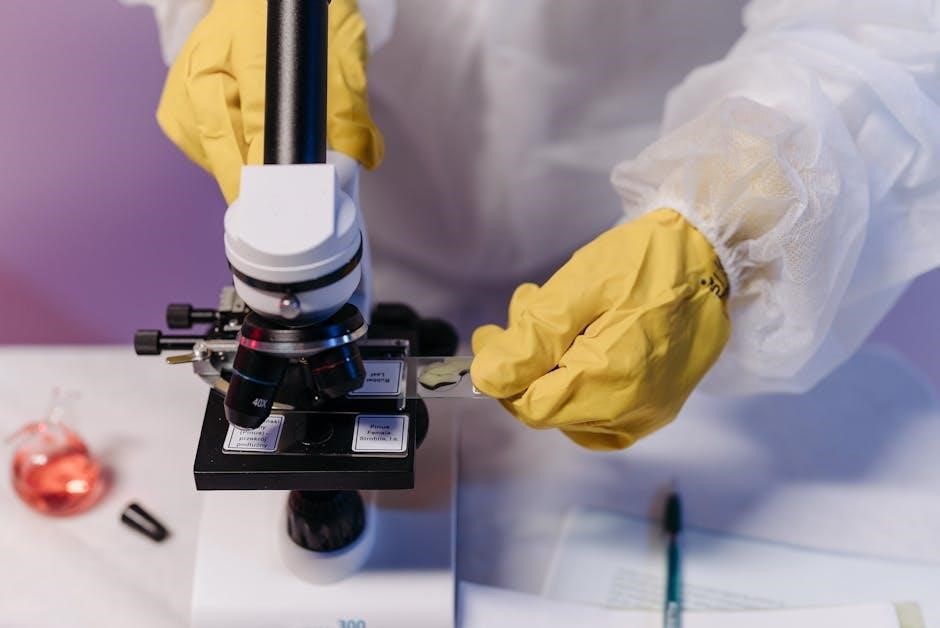
Thermochemistry Experiment
The thermochemistry experiment in Chemistry 1050 labs typically involves measuring the heat changes associated with chemical reactions. A common approach is using calorimetry to determine the enthalpy of neutralization, dissolution, or reaction. Students often use a calorimeter to measure the temperature change when two solutions react.
Calculations involve using the specific heat capacity of the solution, the mass of the solution, and the temperature change to determine the heat absorbed or released (q). This value is then used to calculate the enthalpy change (ΔH) for the reaction, often expressed in kJ/mol.
Common reactions include the neutralization of a strong acid with a strong base, such as hydrochloric acid (HCl) and sodium hydroxide (NaOH). The experiment may also involve determining the enthalpy of dissolution of a salt in water, where the heat absorbed or released during dissolution is measured.
Potential errors in the experiment can arise from heat loss to the surroundings, inaccuracies in temperature measurements, and incomplete reactions. Proper insulation of the calorimeter and careful measurement techniques are crucial for minimizing errors. Understanding the concepts of enthalpy, heat capacity, and Hess’s Law is essential for correctly interpreting the results.

